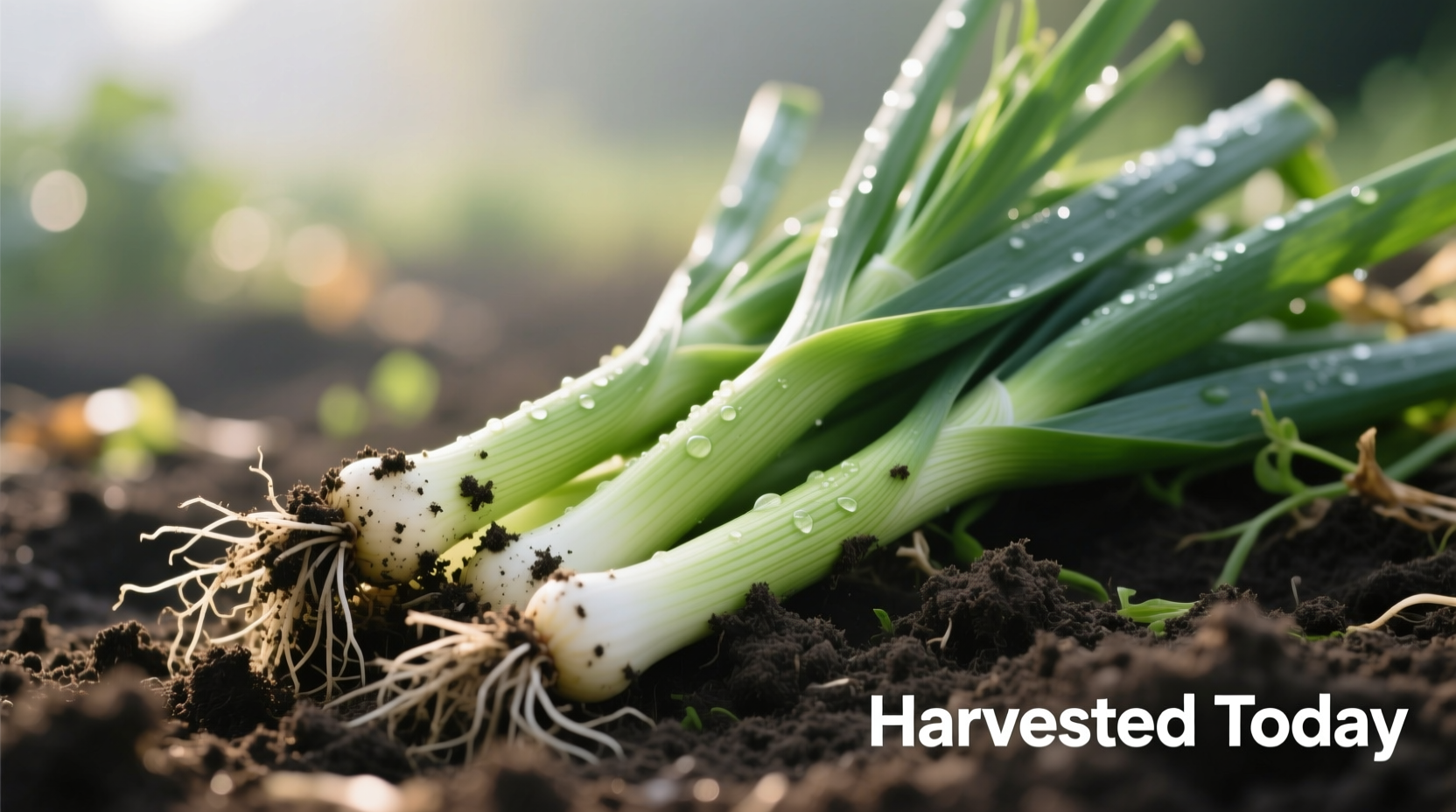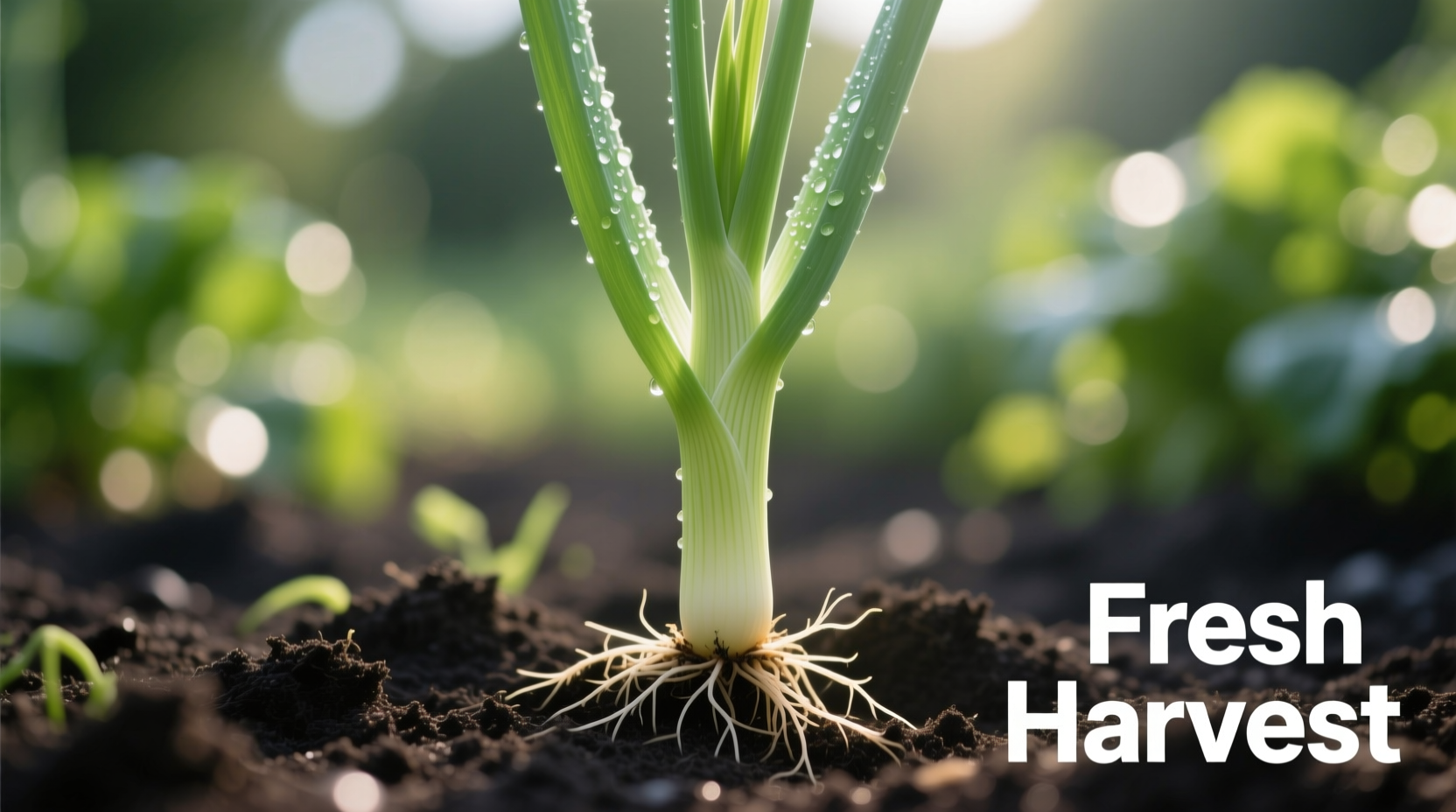Why Young Leeks Deserve a Spot in Your Kitchen
Unlike their mature counterparts that develop a pronounced onion-like sharpness, young leeks offer a delicate sweetness that enhances dishes without overwhelming other ingredients. Harvested between March and June when they're pencil-thin (about 1/2 inch in diameter), these spring vegetables maintain remarkable tenderness throughout their entire length. Chefs prize them for their culinary flexibility - you can use nearly the entire plant without the laborious cleaning required for mature leeks.

What Makes Young Leeks Different: A Practical Comparison
Understanding the distinction between young and mature leeks transforms how you select and use them. While both belong to the Allium ampeloprasum species, their harvesting time creates significant differences in culinary application.
| Characteristic | Young Leeks | Mature Leeks |
|---|---|---|
| Harvest Time | Spring (March-June) | Fall-Winter |
| Thickness | < 1/2 inch diameter | 1 inch+ diameter |
| Flavor Profile | Mild, sweet, delicate | Strong, pungent, onion-like |
| Edible Portion | 90-100% of stalk | Primarily white/light green |
| Cooking Time | 3-8 minutes | 15-30 minutes |
Your Seasonal Guide to Young Leeks
Timing matters when seeking the best young leeks. According to USDA agricultural data, their availability follows a precise seasonal pattern that varies slightly by climate zone:
| Region | Earliest Harvest | Peak Season | Latest Harvest |
|---|---|---|---|
| Northern US/Europe | March | April-May | June |
| Mediterranean | February | March-April | May |
| Warmer Climates | January | February-March | April |
This seasonal timeline comes from the USDA Seasonal Produce Guide, which tracks regional harvest patterns based on climate data collected from agricultural extensions nationwide.
Selecting Perfect Young Leeks at Market
When shopping for young leeks, look for these quality indicators that distinguish true spring varieties from prematurely harvested mature leeks:
- Vibrant color gradient - crisp white base transitioning smoothly to bright green without yellowing
- Firm, unblemished stalks that feel substantial for their size
- No flowering - mature leeks often develop flower stalks that make them tough
- Roots intact - fresh specimens will have moist, white roots
Avoid specimens with dark spots, slimy texture, or excessive soil trapped between layers - these indicate improper handling or advanced age. The University of Minnesota Extension confirms that young leeks with intact roots maintain freshness 30% longer than trimmed varieties.
Simple Cleaning Method That Preserves Texture
Unlike mature leeks requiring extensive cleaning, young leeks need minimal preparation:
- Trim root end and dark green tops (save for stock)
- Cut in half lengthwise
- Rinse under cold water, fanning layers gently
- Pat dry with clean towel
This method preserves their delicate structure while removing any trapped soil. Over-soaking can cause young leeks to become waterlogged and lose their crisp texture.
5 Culinary Applications That Shine
Young leeks' versatility makes them valuable across cooking techniques. These applications maximize their unique qualities:
Raw Preparation
Thinly slice young leeks for salads or use as a garnish. Their mild flavor won't overpower delicate greens. Try them in:
- Spring pea and young leek salad
- Fresh herb and leek compound butter
- Raw vegetable crudités with herb dip
Quick Sautéing
Cook 3-5 minutes in olive oil until just tender. Perfect as:
- Base for omelets or frittatas
- Accompaniment to pan-seared fish
- Quick side dish with lemon and herbs
Grilling
Brush with oil and grill 2-3 minutes per side. Ideal for:
- Skewers with spring vegetables
- Charred leek and asparagus pizza
- Grilled leek and potato salad
Storage Techniques for Maximum Freshness
Proper storage extends young leeks' shelf life significantly. The FDA Food Safety guidelines recommend these methods:
- Refrigeration: Wrap in damp paper towel, place in perforated plastic bag (5-7 days)
- Water method: Stand upright in 1 inch of water, cover with plastic bag (7-10 days)
- Freezing: Blanch 2 minutes, ice bath, pat dry, freeze flat (6 months)
Avoid washing before storage - excess moisture accelerates spoilage. The University of California Cooperative Extension confirms that young leeks stored upright maintain cellular integrity 25% better than horizontal storage.
Common Mistakes to Avoid
Even experienced cooks make these errors with young leeks:
- Overcooking - they cook quickly; test after 3 minutes
- Discarding too much - 90% is edible compared to 50% in mature leeks
- Using high heat - medium heat preserves delicate flavor
- Storing near ethylene producers - keep away from apples and bananas
Nutritional Benefits Worth Noting
Young leeks offer impressive nutritional advantages according to USDA FoodData Central:
- Higher vitamin C content than mature leeks (18mg vs 12mg per 100g)
- Rich in kaempferol, a flavonoid with antioxidant properties
- Excellent source of vitamin K (providing 42% of daily value)
- Contains prebiotic fibers that support gut health
Their early harvest preserves more heat-sensitive nutrients that degrade as leeks mature. Incorporating young leeks into your spring diet provides seasonal nutrition aligned with your body's changing needs after winter.











 浙公网安备
33010002000092号
浙公网安备
33010002000092号 浙B2-20120091-4
浙B2-20120091-4